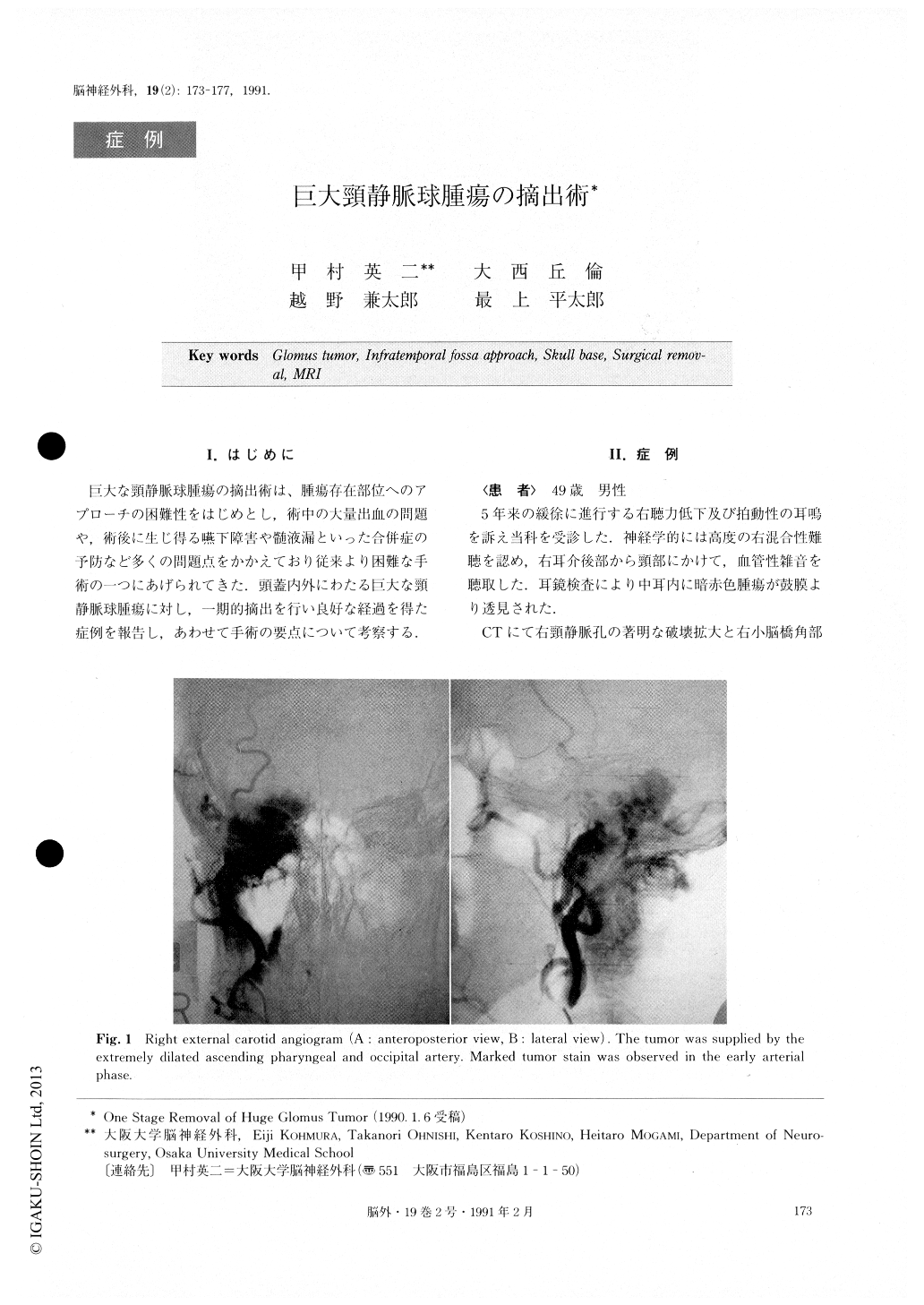Japanese
English
- 有料閲覧
- Abstract 文献概要
- 1ページ目 Look Inside
I.はじめに
巨大な頸静脈球腫瘍の摘出術は、腫瘍存在部位へのアプローチの困難性をはじめとし,術中の大量出血の問題や,術後に生じ得る嚥下障害や髄液漏といった合併症の予防など多くの問題点をかかえており従来より困難な手術の一つにあげられてきた.頭蓋内外にわたる巨大な頸静脈球腫瘍に対し,一期的摘出を行い良好な経過を得た症例を報告し,あわせて手術の要点について考察する.
Abstract
Surgical removal of a huge glomus jugular tumor has been considered as one of the most difficult skull base surgeries not only because of the difficulty in approaching the tumor, but also because of its highly vascular nature and various possible postoperative com-plications. We used combined infratemporal fossa and lateral suboccipital approach in a single stage to oper-ate on a 49-year-old male with a huge glomus jugular tumor, which extended from the right cerebellopontine angle to the level of the third vertebra. With this approach we could expose the tumor extensively and control the feeding arteries easilly in spite of marked vascularity of the tumor. Retraction of the cerebellum was only minimal owing to the removal of the petrous bone. The tumor was excised not by piecemeal but in en block manner with preservation of all the cranial nerves but the glossopharyngeal nerve. To prevent postoperative cerebrospinal fluid leakage, the following procedures were very useful ; 'blind sack closure' of the external auditory canal, careful closure of the Eus-tachian tube, use of the pedicled muscle flap from the temporal and the sternocleidomastoid muscle, use of fibrin glue at the time of the wound closure, and place-ment of preventive spinal drainage. The patient was discharged with hoarseness and facial palsy. However these symptoms had almost completely disappeared within one year. He is working in the same occupation as before.

Copyright © 1991, Igaku-Shoin Ltd. All rights reserved.


